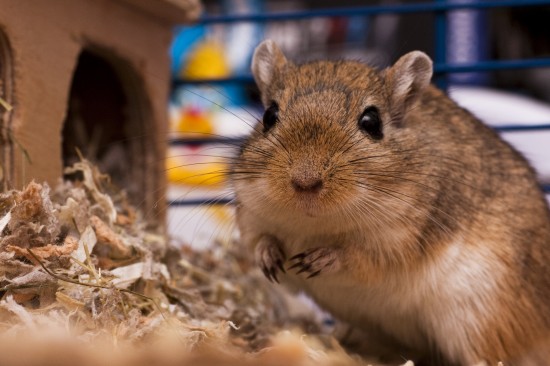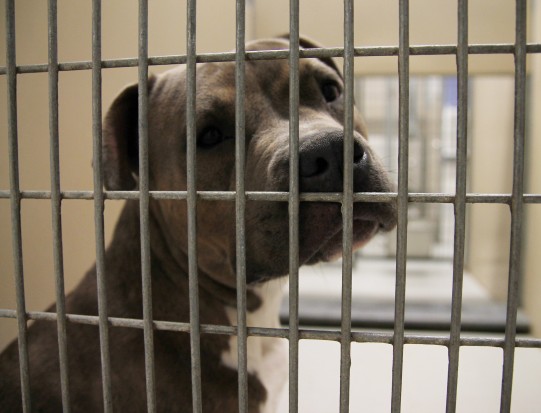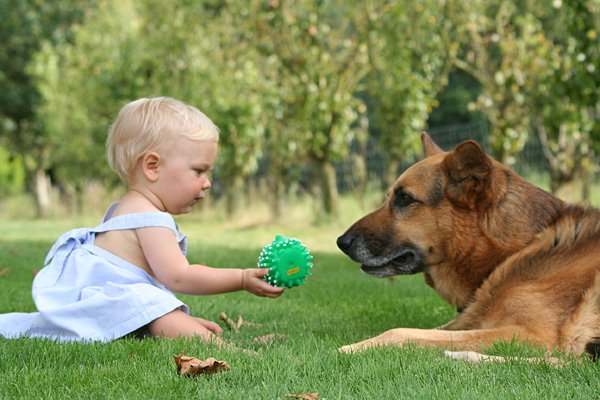

Gerbils are great pets for kids to keep because they introduce children to animals and teaches them a little bit about responsibility. Gerbils are gregarious creatures that don't like to live on their own so the chances are you've got a couple or more of them which you keep in the one environment. You may have noticed that although they all got on well to begin with, a little further down the line, two or more of them started fighting and you don't know why.
Luckily, it's a pretty rare event for gerbils to fight each other in a home environment but when it does happen, it's usually because of a dominance issue. The problem is that when gerbils get aggressive towards each other, they don't take any prisoners and the victor will kill their opponent. This could be why they boast a scientific name that comes from a warrior in Homer's the Iliad called Meriones.
In the wild, gerbils live in largish family groups with a dominant pair being in charge and lots of underlings all living in the same burrow. The social make-up of the gerbils in their natural habitats sees the dominant pair being the ones that breed and all the others help tend and take care of their babies. It's the dominant female whose hormones suppress fertility amongst any of the other females in the group. Eventually some of these underling females will leave the group to start their own because pressure or fighting in their existing group has flared up and forced them out.
When gerbils are kept as pets, they cannot leave if any tension or stress develops within the group and this can result in aggressive, fighting behaviour. It often occurs if there are just too many males as well as females of the same breeding age living in the same environment. A struggle for power develops when one particular gerbil gets weaker due to their age although, this could happen earlier too.
Fighting and aggressive could happen if mum lives with her daughters and it's when her young females reach six months of age that things can really kick off. The daughters may no longer want to be the underlings and therefore they try to kick their mother out only she has nowhere to go.
It's important to know the difference between gerbils play fighting which is really important for them to do and when they are fighting aggressively with the intention of trying to kill each other. When gerbils play fight, they typically jump around and box each other, it's their own special way of establishing a hierarchy within their group.
However, when they fight and mean it, you'll notice they bite each other around the tail and head areas of their opponents bodies. You will also notice they puff up their coats as if trying to make themselves appear bigger and they will chatter their teeth at each other.
There are subtle signs which can be quite hard to pick up on and which is why parents should always check on their children's pets on a regular basis. As a prelude to females fighting each other, more often than not, one of them will be deprived of food and water which results in a dramatic drop in condition and weight. Older females get the rougher deal when young ones challenge her authority. If you notice your pets start sleeping in different areas, it could also be a good indication there's trouble brewing on the horizon.
You would need to separate the gerbil that's causing the problems and not the victim which is a common mistake many owners make. If there's a lot of aggression and the victim has been severely injured, you may need to take them out of the environment and straight to the vet so they can be treated for their wounds. But with this said, by taking out the victim, the aggressive gerbil may well just start picking on another member of the group.
The problem is that it can be hard to identify the trouble maker because once the attack has started on one gerbil other members of the group will pick on them too. Taking out the injured party because they have blood on them is often a mistake pet owners make too. It is more usual for the aggressor and therefore the winner not to have suffered any injuries hence they were the victors. The aggressor may have slight injuries around their mouths and heads rather than around their back-ends simply because they did not try to get away as the victim does.
The other thing to bear in mind is that any initial injuries are harder to spot and that it is only when the fight has gone on for a while that injuries will be more apparent and obvious which means they could be more severe.
It is a far better idea to keep male gerbils in groups of four because they will rarely start fighting or try to set up a hierarchy. There is less chance of a dominance issue becoming a problem within the group too. However, keeping two or more females together might well result in an issue developing and they could start fighting each other. The larger the number of females in the group, the more risk there is of aggressive behaviour occurring.
The other factor to keep an eye on is the amount of space your gerbils have in their environment as this may have a bearing on whether or not aggressive behaviour develops within a group of females. However, with this said, some pet owners have reported that overcrowding is not the issue but rather the opposite and that larger tanks which boast interlinking areas as being environments that seem to stimulate fighting behaviour. This could be due to the fact that gerbils mark their territory and therefore establish distinct areas within a larger one which they feel they need to defend.
Luckily, fighting among pet gerbils is relatively rare with groups living nicely together throughout their lives. However, to minimise the risk of aggressive behaviour developing there are a few pointers worth taking a note of which is to avoid putting too many females together in the same environment and to keep an eye out for any tell-tale signs there might be trouble brewing. If you have older females living with their daughters keep a close eye on them when the young ones get to six months old as this is when the problems usually start. Males although less likely to fight each other, can occasionally become aggressive so you need to know when they are just play fighting and when it's for real.
 Who carries the best price pet meds and products?
Who carries the best price pet meds and products?
One will g
Who carries the best price pet meds and products?
Who carries the best price pet meds and products?
One will g
 All About Dog Rescue Centres
All About Dog Res
All About Dog Rescue Centres
All About Dog Res
 Areas And Places Your Dog Might Pick Up Ticks
Areas And Places
Areas And Places Your Dog Might Pick Up Ticks
Areas And Places
 Can Dogs Use Their Sense Of Smell To Find Their Way Home?
Can Dogs Use Thei
Can Dogs Use Their Sense Of Smell To Find Their Way Home?
Can Dogs Use Thei
 Get Chicken Runs to keep your chickens clean and away from predators
Get Chicken Runs to keep your chickens clean and away from
Get Chicken Runs to keep your chickens clean and away from predators
Get Chicken Runs to keep your chickens clean and away from
Copyright © 2005-2016 Pet Information All Rights Reserved
Contact us: www162date@outlook.com